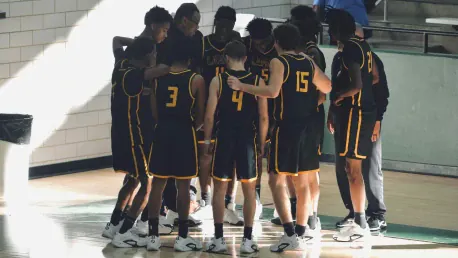The pressing call for legislative change in Minnesota has been amplified by the parents of two paralyzed student-athletes, who are challenging the existing insurance coverages provided by the Minnesota State High School League (MSHSL). They share their profound experiences navigating life after their children’s catastrophic sports injuries, emphasizing the significant gaps in current insurance policies and their shortcomings in providing adequate support for long-term care. The moving testimonies of these families underscore the urgent need for comprehensive reforms in the coverage offered to student-athletes.
The Impact of Injuries on Families
Ethan Glynn’s paralyzing injury during a high school football game in recent years has thrown into sharp relief the gaps in insurance coverage for ninth-grade athletes. His parents have struggled to manage the exorbitant costs associated with medical care and the various accessibility needs required after such a life-altering injury. These costs include expenses for a powered wheelchair, a specially adapted van, home modifications to accommodate Ethan’s condition, and continuous physical therapy. The financial strain underscores the inadequacy of the current policies in providing comprehensive support to families in similar circumstances.
Similarly, the Jablonski family’s experience with inadequate insurance benefits for their son Jack, who was paralyzed during a high school hockey game more than a decade ago, underscores the long-term financial and emotional burdens placed on families. Despite being covered by the MSHSL’s insurance policy at the time, the Jablonskis found the benefits insufficient to meet Jack’s comprehensive and long-term care needs. The repeated denial of claims for necessary medical items and home adaptations has placed an enduring financial strain on the family. Their experience highlights the inadequacies of the existing $3 million insurance policy, which fails to accommodate the lifelong requirements of seriously injured athletes.
Legislative Advocacy for Change
Driven by these personal hardships, both the Glynn and Jablonski families have passionately advocated for legislative intervention to address the urgent need for expanded coverage. Their requests include extending insurance benefits to ninth-grade athletes and raising the current insurance policy limit from $3 million to $10 million. This increase would provide a more realistic and comprehensive coverage solution for families facing similar catastrophic injuries.
Senator Scott Dibble has taken up the mantle of this cause, sponsoring the legislation that aims to ensure injured high school athletes receive the needed support without facing financial devastation. Dibble’s legislation seeks to address not only the specific limitations of the current policy but also the broader moral and ethical implications of adequately supporting injured student-athletes. The proposed changes emphasize the importance of recognizing, and more importantly addressing, the long-term needs of families impacted by severe sports injuries, steering the focus towards equitable and inclusive policies.
The Current MSHSL Insurance Policy
The Minnesota State High School League currently maintains a $3 million insurance policy for student-athletes. While this policy might appear sufficient at first glance, critics argue that it falls short when considering the lifetime care needs of severely injured students like Ethan and Jack. Sustaining a long-term quality of life for athletes with catastrophic injuries involves considerable and continuous medical and accessibility expenses that the current policy does not adequately cover.
The MSHSL has resisted calls for changes to its insurance policy, citing financial concerns and practical constraints. Roger Aronson, MSHSL’s lobbyist, argued that the proposed insurance structure would be unsustainable within the current economic framework for school districts, potentially leading to increased financial burdens for the districts and the league. However, this stance continues to face criticism from affected families and advocates who argue that the moral and ethical responsibilities towards the welfare of student-athletes should take precedence and necessitate immediate reforms.
Testimonies of Affected Families
The testimonies from affected families paint a stark picture of the reality faced by those dealing with inadequate insurance support after catastrophic injuries. Corey Glynn’s recounting of the drastic changes following Ethan’s injury depicts a life filled with challenges, yet marked by resilience and a continuous fight for essential medical care and accessibility equipment. Their ongoing struggle against bureaucratic hurdles lays bare the systemic issues within the current policy framework, which fails to meet their immediate and long-term needs.
The Jablonski family’s ongoing struggles further emphasize the systemic flaws of the current insurance policy. Despite being covered, the family encounters frequent denials for necessary medical supplies, treatments, and round-the-clock caregiving. These rejections highlight the crucial elements often overlooked in the existing policy, revealing the necessity for updated insurance frameworks to ensure no affected family is left without essential support. Collectively, these narratives resonate deeply, advocating for comprehensive and just policies reflective of the real costs and lifelong requirements of supporting injured athletes and their families.
Ethical and Moral Considerations
The debate surrounding the MSHSL’s insurance policy extends beyond financial feasibilities, touching upon the ethical obligations of sports leagues towards their athletes. The families’ narratives and advocacy underline the moral imperative to update the insurance policy to reflect the genuine needs of catastrophically injured athletes. In this light, ensuring comprehensive coverage that matches the real costs incurred by such injuries is not merely a financial consideration but a moral one.
There is a compelling argument for the MSHSL to enact proactive measures to ensure equitable protection for all athletes. This includes extending coverages to ninth-grade athletes and raising the policy limits to better align with the actual medical and accessibility costs endured by families facing severe injuries. Addressing these needs head-on bolsters their arguments for updated policies that honor ethical considerations and prioritize the welfare of student-athletes above financial constraints.
Rallying for Support
Families and advocates have mobilized substantial support, presenting their compelling stories before legislative bodies such as the Minnesota Senate Education Committee. The aim has been to humanize policy decisions, thus emphasizing that the current insurance framework falls short of meeting the critical needs it ought to protect. The unmistakable message conveyed through their testimonies is the necessity for a robust insurance system that upholds the dignity and comprehensive care of injured athletes.
By pushing for expanded coverage and higher policy limits, these advocates highlight the urgent need for systematic reforms. Their efforts aim to reshape the existing insurance policy framework, ensuring a more inclusive and equitable approach that safeguards the well-being and future of all high school athletes subject to catastrophic injuries. Their advocacy serves as both a call to action and a heartfelt plea for justice and comprehensive support.
The Path Forward
The urgent call for legislative change in Minnesota has been powerfully highlighted by the parents of two paralyzed student-athletes, who are actively pushing for reforms in the insurance coverages provided by the Minnesota State High School League (MSHSL). These parents have bravely shared their deeply personal journeys dealing with life after their children’s serious sports injuries, revealing substantial gaps in the current insurance policies. Their stories bring to light the failure of existing coverage to adequately support long-term care needs. These heartfelt testimonies emphasize the critical need for comprehensive reform in the insurance policies available to student-athletes. The current system is inadequate, and the experiences of these families serve as a compelling catalyst for change, demonstrating the importance of updating and improving the coverage to ensure it meets the long-term needs of injured student-athletes, providing them with the support and care they require.









